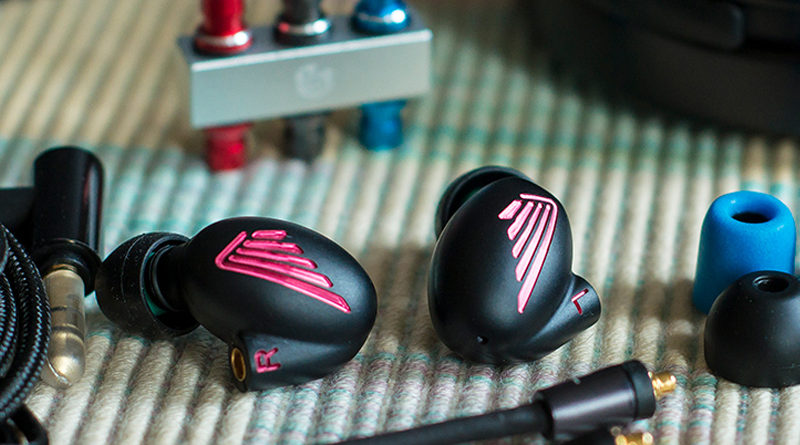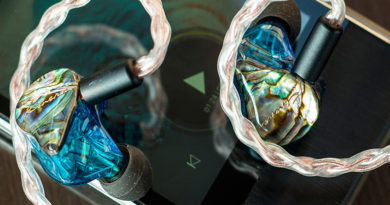LZ A5 — there are no limits to perfection
Before starting to write this review we were in a struggle while questioning ourselves what would we expect from IEMs at >$250 price range. We’ve already reviewed different products starting from $20 and stretching all the way up to $170 and found some of those to be very appealing and capable of producing excellent sound quality. What else to await if your expectation of «high quality sound» is already satisfied? Should we continue to climb the stairs and would there would be any further improvements or newer impressions adequate to compensate the cost?… Doubts aside, there is no better way to know other than to give it a try. LZ A5 IEMs are on hands and we are ready to end our guess.

LZ HIFI AUDIO is a small company located in ShenZhen, China. Domestic LZ brand popularity came with the release of LZ-02 IEMs with further positive feedback and demand emerging in western part of the world. Currently, LZ HIFI AUDIO lists 4 products on their official website and LZ A5 is their latest model.
LZ A5 technical specifications:
- Type: In-ear
- Driver combination: 4 x balanced armature (Knowles)+ 1 dynamic
- Sensitivity: 105±1dB
- Impedance: 16Ω
- Frequency response: 8 — 36kHz
- THD: < 0.2%
- Power output: 5mW
- Connection type: wired
- IEM connector: MMCX
- Cable plug type: 3.5mm, gold-plated
- Cable length: 1.2m
- Product standard: CTIA International Standard), IECQ
- Weight: 29g, including cable
- Additional bundled accessories:
- Blue output filter: +2db to 3KHz~10KHz range
- Black output filter: +1db to 3KHz~10KHz range
- Gray output filter: -1db from 3KHz~10KHz range
- Red output filter: -2db from 3KHz~10KHz range

The most interesting part is to play with different filters to understand how it impacts the output. Concerning the combination of drivers in this hybrid model we tend to think that red or gray filters should be the most necessary to equalize the extended treble range. It would depend mostly of overall tonality as well as of personal susceptibility to higher frequencies.
Package and box contents:
LZ A5 come in a relatively large black matt box with brand name imprint at front. This imprint is not filled with any color but looks glossy instead. This makes an impression of more strict and less striking approach towards the packaging design.
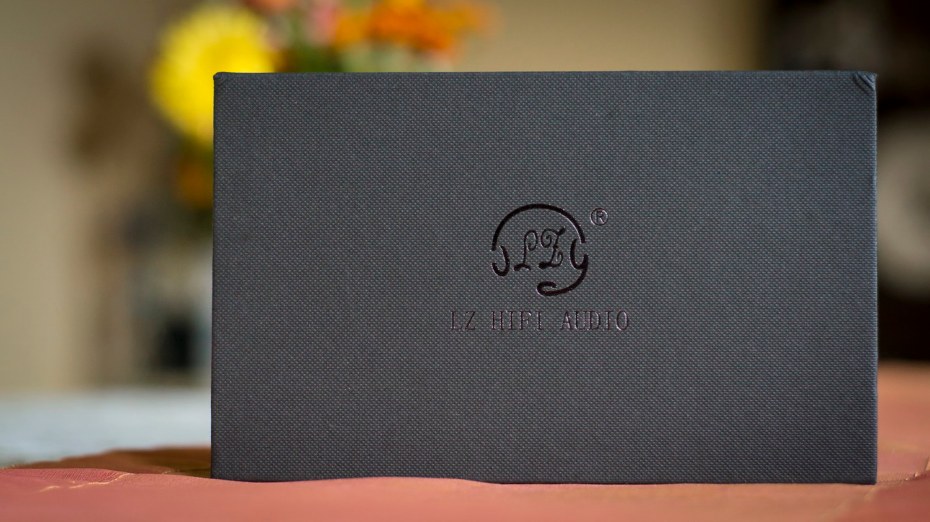
The box also features flip top with magnetic holders and soft foamy podium inside with lots of openings. IEMs, storage case and set of filters are securely retained there and the cable is neatly placed underneath.
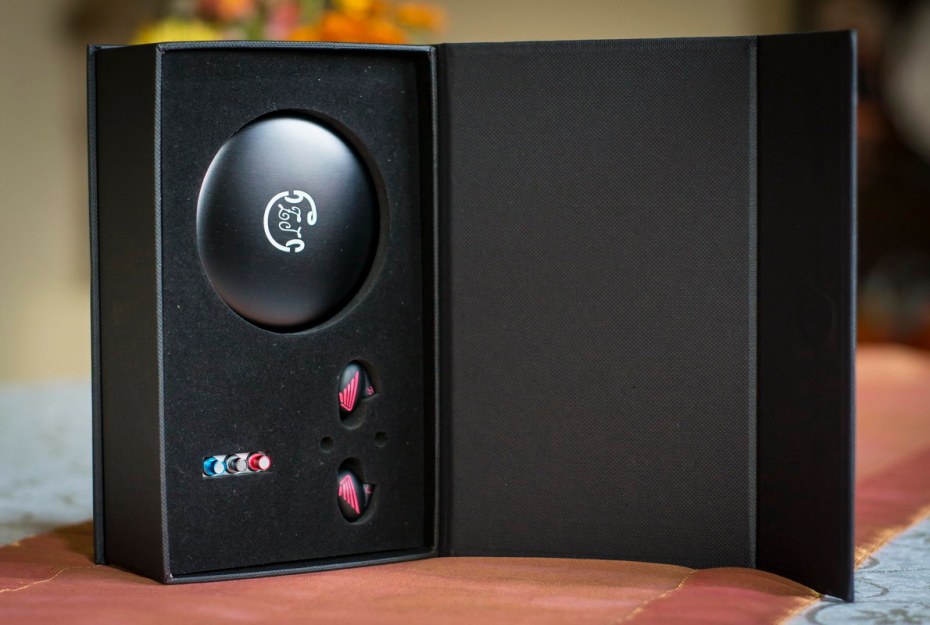
Full set lists the following items:
- IEMs
- cable
- 3 pairs of silicone eartips (S|M|L)
- 1 pair of memory foam eartips
- 4 pairs of filters (3 pairs in the box + 1 pair in IEMs)
- storage case
- user manual and warranty

Mullenium falcon spaceship is not included for the price but this is a pretty good bundle in either case. Including such durable aluminum storage case with tight top cover fit is always a good idea when it comes to reliable protection. One extra pair of memory foam would be a benefit for those who prefer such type over regular silicone eartips.
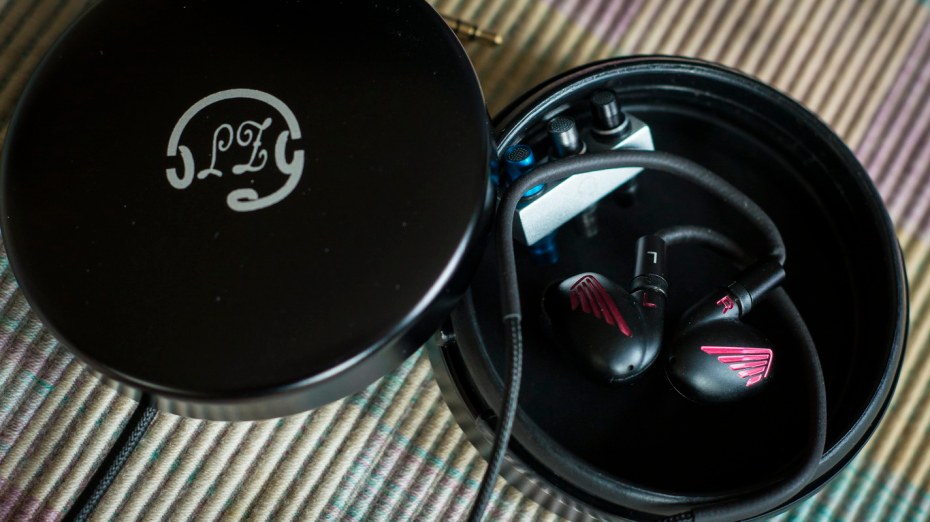
Apart from that, a set of exchangeable filters creates the additional value. By the way, this filter set can be purchased separately at $20 cost.
Design and materials:
LZ A5 IEMs are made of two pieces of anodized aluminum with engravings in form of the wings (model logo, perfect for Honda vehicle owners, we guess: ) filled with purple paint and one compensation opening at top.

Output nozzles openings are protruding from the bottom parts and have inner thread for exchangeable filters attachement. Build quality is decent, parts are perfectly aligned, elements have not free play.

Filter bases and grills are also made of aluminum and have four color versions for a proper differentiation. All are equipped with rubber gasket for better dust and moisture protection and also acting as the additional spacer. Filters are provided with very convenient storage solution — rectangular aluminum holder with inner threads capable of accepting three pairs of filters simultaneously which does a good job of preventing possible loss of such tiny items. Together with a storage case, this makes a good duet for accident-free long lasting life of your brand new IEMs

Cable infromation is not very detailed but it seems to make a good match for these IEMs. Gold-plated 3.5mm stereo jack and MMCX connectors with aluminum housings, wires are packed in soft nylon braid, aluminum Y-splitter and relatively long flexible ear hooks. Hooks come straight out of the box, you’d have to give it the appropriate flex for the best fit.

Overall fit is excellent and tight indeed. IEMs are almost imperceptible, shape is universal and comfortable, ear guides are capable of providing the additional support, no problems while walking or shaking head. Outer noise remains barely audible and we’d say that isolation is on par with the other most respected IEMs.

No doubts in this section that LZ A5 are reaching our higher expectation. This is a perfectly crafted product with modern materials use, good bundle and additional value items like exchangeable tuning filters. The next step is to understand whether the sound quality is on par with the exterior…
Sound quality:
Testing equipment: Hidizs AP80 DAP, AP200 DAP
Lows and midbass:
Sub-bass has excellent resolution and large amount of presence. One of the hybrid IEMs that have the full sub-bass extension and well exposed delivery. Initially it might feel that it sometimes dominates in rare tracks but would be taken for granted eventually. Such first impression might originate from unexpectedly rich sub-bass reproduction taking into consideration previous experience with other hybrid models. We wouldn’t say that A5 are overloaded in this frequency range. Moreover, A5 are the first IEMs to reproduce large amount of details and show excellent layering in this area which shifts the accent from simply evaluating amount to discovering new dimensions.

Mid-bass is on par. Fast, full power, sterling hit as a great accompaniment to all other sections. It might get a bit obscured by sub-bass in bass-heavy tracks but this happens so rarely that we can’t attribute that to cons. In fact, both the sub-bass and mid-bass ranges are tuned very good, successfully counterbalance other ranges and have decent resolution. No doubts that LZ A5 is the impressive performer in this respect from all hybrid IEMs that we have tested so far.
Mids and vocals:
First of all there is a difference between lower and higher mids presence resulting in totally different male and female vocal perception. The latter is brought to front, full of life, sparkles with details and distinctly texturized. Male vocals sound less engaging, moderately detailed and sometimes feel recessed or overtaken by either lower or treble ends. Again, this rarely happens and mostly depends of initial audio track equalization. If the track exhibits V-shaped EQ — LZ A5 would add it’s own similar tuning and emphasize this effect further. Therefore, not really applicable to tracks with neutral balance. Most of the audio material of different genres with male voices that we use to test IEMs was performed well with no rough recession in mids, maintaining adequate gain level with only one composition sounding kind of weird: Scorpions — «Holiday». No surprise here cause we knew that this particular recording (or rip) do put Klaus Meine voice behind no matter which IEMs we put on… Therefore, our conclusion for mids would be that despite LZ A5 are V-shaped in its nature they still expose many benefits such as high resolution, excellent layering and engaging performance. Moreover, female vocals are free of lisping even at the peaking notes, stay totally under control which shows the enormous capabilities of A5 IEMs in upper mids and lower treble.

Treble:
All our previous beliefs and benchmarks were destroyed by the cruel reality of LZ A5 reproduction of treble. All previous idols were thrown down… From the very first track we’ve been blown away with its superiority in terms of sharpness, clarity, iridescence, openess and airy feel. Detalization is so unreal that it opens the whole new world in tracks that seemed so familiar… At the same time, there is no roughness or excessive amount of treble to sound unpleasing. Just surprisingly pure, clean, sibilance-free reproduction that stays imprinted in mind and very hard to wean. Don’t get us wrong — treble section doesn’t heavily dominate the overall sound picture — it is apparently elevated but most of the accent is a further derivative of its decent resolution multiplied by one’s own susceptibility to this range. Someone would say that its overly bright and crisp, someone (as we are) would just dip in and dissolve in this flow… Just another virtue of applying more engaging tuning to hardware pumped IEMs.
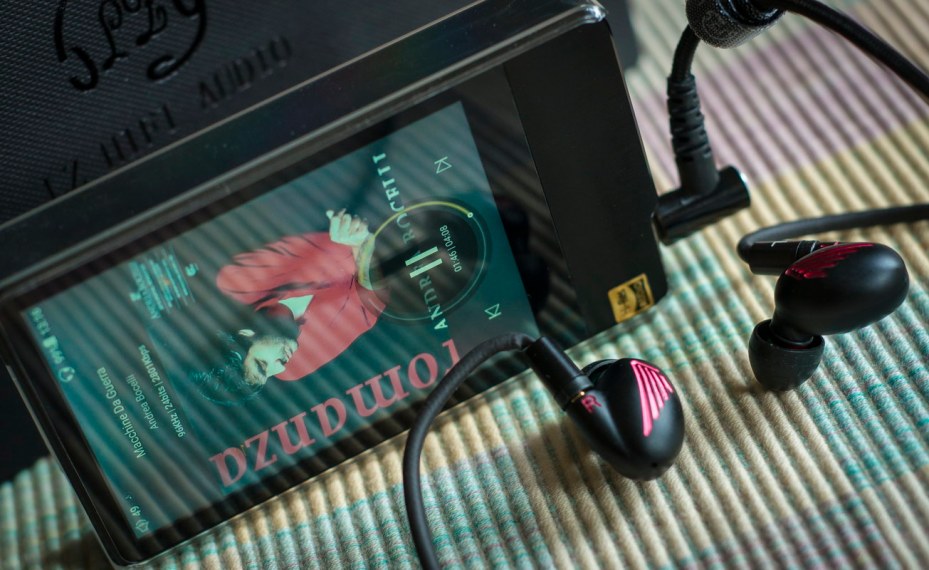
Filter influence:
As already been described four pairs of filters should have the following declared effect:
- Blue output filter: +2db to 3KHz~10KHz range
- Black output filter: +1db to 3KHz~10KHz range
- Gray output filter: -1db from 3KHz~10KHz range
- Red output filter: -2db from 3KHz~10KHz range
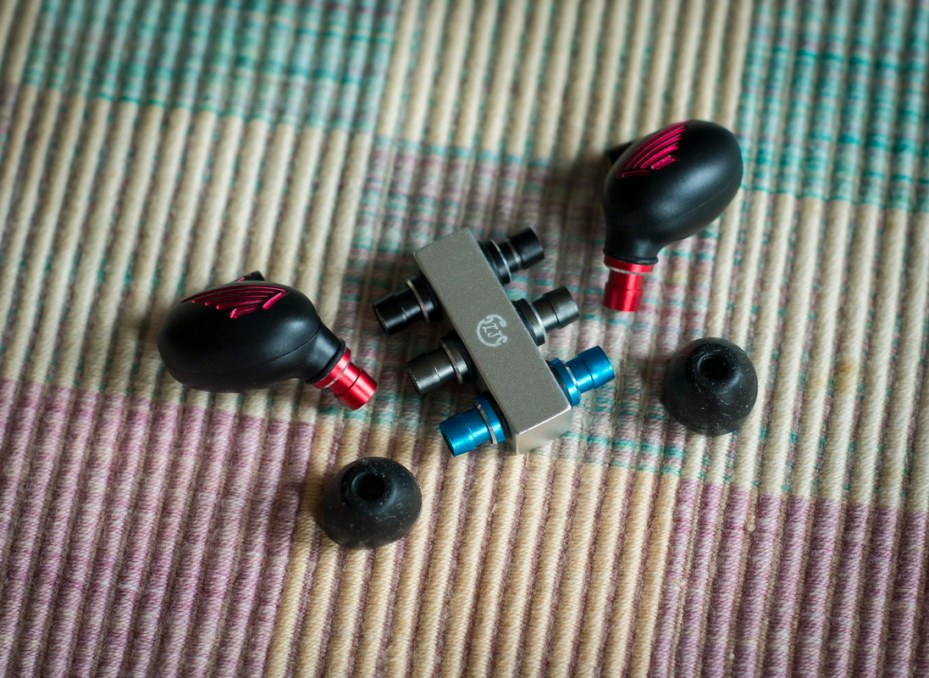
All of these are addressing upper-mid band and higher frequencies only, not influencing lower-mids and bass. In real life there isn’t any notable difference between blue and black / red and grey pairs. Seems that we are not so sensitive to spot any change and it is time to provide oneself with the necessary equipment for precise measurements Anyway, we would try to provide very simple discription:
- Blue — feels the worst as if too much of treble is present and dominates the entire scene
- Black — same feeling with additional sense or excessive sharpness
- Gray — much better but some sudden upper mids range peaks still interfere
- Red — the best experience with upper mids and treble brought to relatively reasonable amount

So, our favorite pair is RED but to tell the truth we would still like to see some further gain descrease in the same range. If LZ HIFI would ever release the additional filters with such specifications — we would be the first to buy it in order to prolongue each listening session. It doesn’t mean that there are no other cost-free options like little EQ or more audiophile-friendly MSEB (Hiby Music) adjustments applied to 3-10KHz in order to slightly reduce the impact. Such options would also do a perfect job while maintaining all other advantages of these IEMs.
Sound stage and layering:
The best IEMs in this aspect so far… Instrument layering and positioning is so good that we didn’t require special binaural recordings to check the distance and distribution on different planes. Many tracks disclosed some instruments being located higher or lower the horizontal plane, creating a feel of additional space or standing much closer to the center of the stage. Furthermore, distant channel separation and wider stereopanorama promotes the same. Instruments do not overlap, perfectly layered and each one is precisely contoured. Stellar performance here.

Sound in general:
LZ A5 sound can be described as bright, crisp and engaging with high amount of texturing and resolution on lows, upper mids and treble together with slightly recessed lower mids range. Sound signature of LZ A5 is unique, quite deviated from a monitor-like neutral sound due to a specific tuning. Best music genres would be instrumentals, orchestra, all types of female vocals or lower end oriented tracks.
Conclusion:
While finilizing this review, we would like to answer one main questions: are we impressed with LZ A5 sound?

The answer is yes, we are impressed or even astounded with several sound attributes such as the overall resolution, texturing and presence of lower range, excellent instrument layering and separation. Furthermore, LZ A5 product features a good bundle, additional exchangeable filters, more complicated driver combination and plenty of room for further SW|HW tuning which might be required by treble-sensitive people to play with its signature. Everything mentioned above makes A5 IEMs a valuable choice for any audio fan, especially those who look for brighter tonality and engaging sound.

